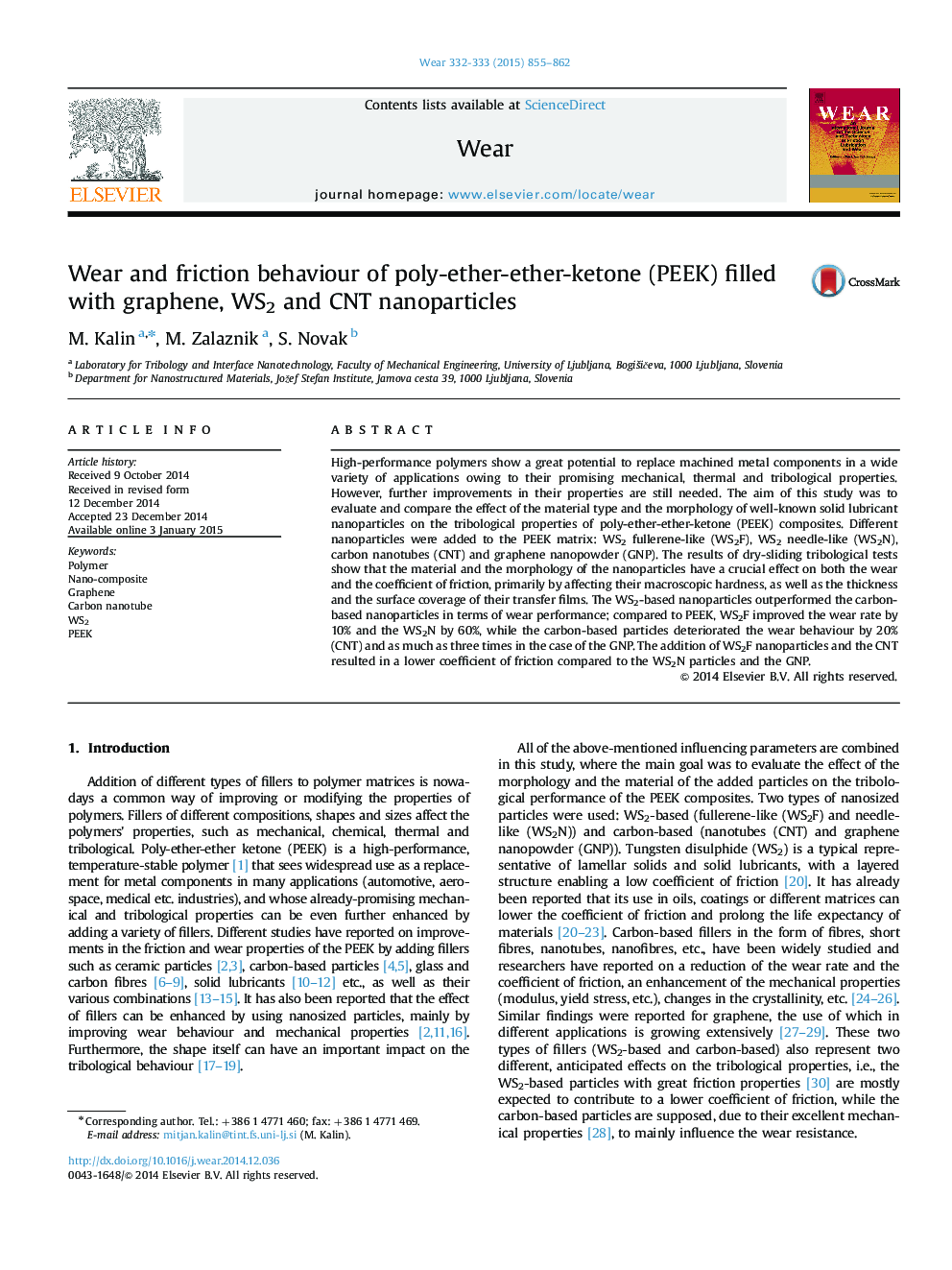| کد مقاله | کد نشریه | سال انتشار | مقاله انگلیسی | نسخه تمام متن |
|---|---|---|---|---|
| 617089 | 1454975 | 2015 | 8 صفحه PDF | دانلود رایگان |

• Tribology of PEEK nanocomposites was studied in dry sliding contact against steel.
• Graphene, WS2 (needles and fullerenes) and CNT nanoparticles were used as fillers.
• Wear rates by using WS2 fillers were lower compared to the graphene and CNT.
• Wear behaviour was improved with higher macroscopic hardness.
• Adding fullerenes and CNTs achieved lower friction than needles or graphene.
High-performance polymers show a great potential to replace machined metal components in a wide variety of applications owing to their promising mechanical, thermal and tribological properties. However, further improvements in their properties are still needed. The aim of this study was to evaluate and compare the effect of the material type and the morphology of well-known solid lubricant nanoparticles on the tribological properties of poly-ether-ether-ketone (PEEK) composites. Different nanoparticles were added to the PEEK matrix: WS2 fullerene-like (WS2F), WS2 needle-like (WS2N), carbon nanotubes (CNT) and graphene nanopowder (GNP). The results of dry-sliding tribological tests show that the material and the morphology of the nanoparticles have a crucial effect on both the wear and the coefficient of friction, primarily by affecting their macroscopic hardness, as well as the thickness and the surface coverage of their transfer films. The WS2-based nanoparticles outperformed the carbon-based nanoparticles in terms of wear performance; compared to PEEK, WS2F improved the wear rate by 10% and the WS2N by 60%, while the carbon-based particles deteriorated the wear behaviour by 20% (CNT) and as much as three times in the case of the GNP. The addition of WS2F nanoparticles and the CNT resulted in a lower coefficient of friction compared to the WS2N particles and the GNP.
Journal: Wear - Volumes 332–333, May–June 2015, Pages 855–862